Throughout this Diploma course, we will be looking at different aspects of running a tourism operation. Business operations are the nitty-gritty details of running a company, which need to be considered and attended to in order to not only succeed but thrive. There are many areas of business operations and during this qualification, you will cover many aspects that are part of a successful tourism company.
These are the sort of areas that need to be considered by management when operating a tourism business whether it be domestic or international.
- Health and Safety
- Financial/ revenue management– (cash flow, pricing etc.)
- HR – recruitment, induction, training, appraisals
- Food
- Signage – access (finding and getting to the business)
- Facilities – restrooms, water fountains
- Cleaning
- Merchandise
- Catering for special needs
- On-going improvement
- Management information (e.g. sales information)
- Parking
- Accounts (payment of suppliers, staff)
- Marketing.
Do The Details Matter?
According to Walt Disney theme parks the details do matter. It is the little things that might not necessarily be seen but add to the whole experience of both the cast and guests.
We already know that Walt Disney himself was almost obsessed with creating the most magical, storytelling experience for visitors and that meant that the details were more than important- they were vital. The fact that all visitors are to be referred to as ‘guests’ is to remind the entire Disney staff that they are there to serve and ensure that the guests feel welcome. Similarly, all staff are called ‘cast’ to remind them that they are always on stage and therefore ‘on show’ to guests at all times. Walt Disney’s need to deliver a magical experience to every guest, every time saw him developed processes and innovative practices to ensure this happened. He likened the processes to a railroad engine.
Think of the process as a railroad engine. If the engine does not run properly, it does not matter how friendly the conductor acts or how attractive the passenger cars look, the train will still not move, and the passengers will not pay their fares. The process is the engine of Quality Service.Walt Disney
Learning Activity: Learning from Disney
Read the following excerpt:
Now, answer the following questions.
- What were the lessons that the author wanted us to learn from the Jungle Cruise and Snow White story?
- When Walt Disney used the term dress rehearsal, what did he mean by this?
- What were three strategies that Disneyland used to put them ahead of the competition?
- Give examples of how all cast members are part of the show.
- What is the “balance” talked about in the last 2 pages of the chapter?
Answer these questions in the Forum, Learning From Disney.

While individual tourism-related businesses usually operate independently of each other (airlines, motels, bus companies, restaurants, leisure activities etc.) the success of the industry is dependent on the development of excellent “interrelationships” between these individual tourism-related businesses to ensure the highest standard of product/service delivery to tourists.
Studies have shown that no matter the excellence of individual tourism operations a visitor will usually form a negative impression of their trip based on a bad experience with only one of the tourism operations. For example, an American tourist may form a bad impression of Queenstown as a destination based solely on the rudeness of a hotel receptionist during their weeklong stay. (Collier, 2003).
The ‘one-industry’ concept recognises that the tourism industry comprises various sectors such as sales & marketing, accommodation, transportation, leisure activities etc. are viewed by the tourist together as a total experience. It is important that individual operators in the industry appreciate that the service they deliver is part of a greater whole. It should be the goal of every tourism operator to make a visitor’s experience of New Zealand as seamless as possible.
This means that individual tourism-related businesses should view their products as a sub-product to the total product offering to tourists. (Collier, 2003).
Advocates of the ‘one-industry concept’ argue that it is critical for the whole tourism industry that all of the individual tourism-related businesses work together to improve the quality of service delivery.
Therefore, individual tourism-related businesses should act like links in a chain, with each operator being concerned with the actions of other tourism-related businesses upstream and downstream of their activity (Collier, 2003). This is in part achieved by the willingness of many tourism operators to make recommendations to tourists about other sectors of the industry, or even suggest the services of their competitors if, say, they are unable to accommodate a visitor’s booking at the time they require it. Other simple gestures like making the next downstream reservation or providing guests with a ride to the departure point of a train, shuttle, or flight, make the visitors’ experience of New Zealand less complicated and add to the perception that our tourism industry is well-organised, co-operative, co-ordinated and seamless.
Criticism Of The One-Industry Concept
The one industry concept is a great theory, however, is it realistic? There are several criticisms of the one-industry concept. Click on the following headings to explore this further:
Many tourism destinations are highly seasonal, with peaks and troughs in demand throughout the year. Depending on a single industry to drive economic growth can make the region vulnerable to fluctuations in demand, which can lead to job losses, business closures, and other negative economic impacts.
Over-reliance on tourism can discourage diversification of the local economy, which can limit opportunities for growth and development. For example, regions that rely heavily on tourism may be less likely to invest in other sectors, such as manufacturing or high-tech industries, which could provide alternative sources of employment and income.
The tourism industry can have a significant impact on the environment, particularly in regions that rely on natural resources or outdoor recreation. Overuse or misuse of these resources can lead to ecological damage and reduced attractiveness for visitors, which can undermine the economic benefits of tourism.
The tourism industry can also create social issues, such as income inequality and cultural homogenization. For example, tourism development may create a two-tiered economy, with high-paying jobs in the tourism sector and low-paying service jobs in other sectors. Additionally, tourism development can erode local cultures and traditions, leading to a loss of identity and social cohesion.
Relying on a single industry can make a region less resilient to economic shocks and disruptions. For example, a natural disaster or political instability can have a significant impact on tourism demand, which can lead to job losses and economic contraction.
There are a variety of socio-cultural, economic, and environmental impacts, both good and bad.
Tourism is essentially a pleasure activity and it appeals to our sense of enjoyment.
The visitor experience is made up of all the various tourism products and services that the visitor experiences. The combination of sights, expectations, sounds, smells and the social interaction they have with these various products create a total experience. This includes:
Individual Products
The experiential nature of the tourism product as a whole highlights how important it is for the individual tourism product components to deliver an ‘experience’.
Whilst most product components/providers do provide a service (e.g. a coach trip, a guided tour) this is not enough to class it as an ‘experience’. It is much more than that.
Read the excerpt below about Disney
Think about the importance that Disney places on an 'experience' at their theme parks.
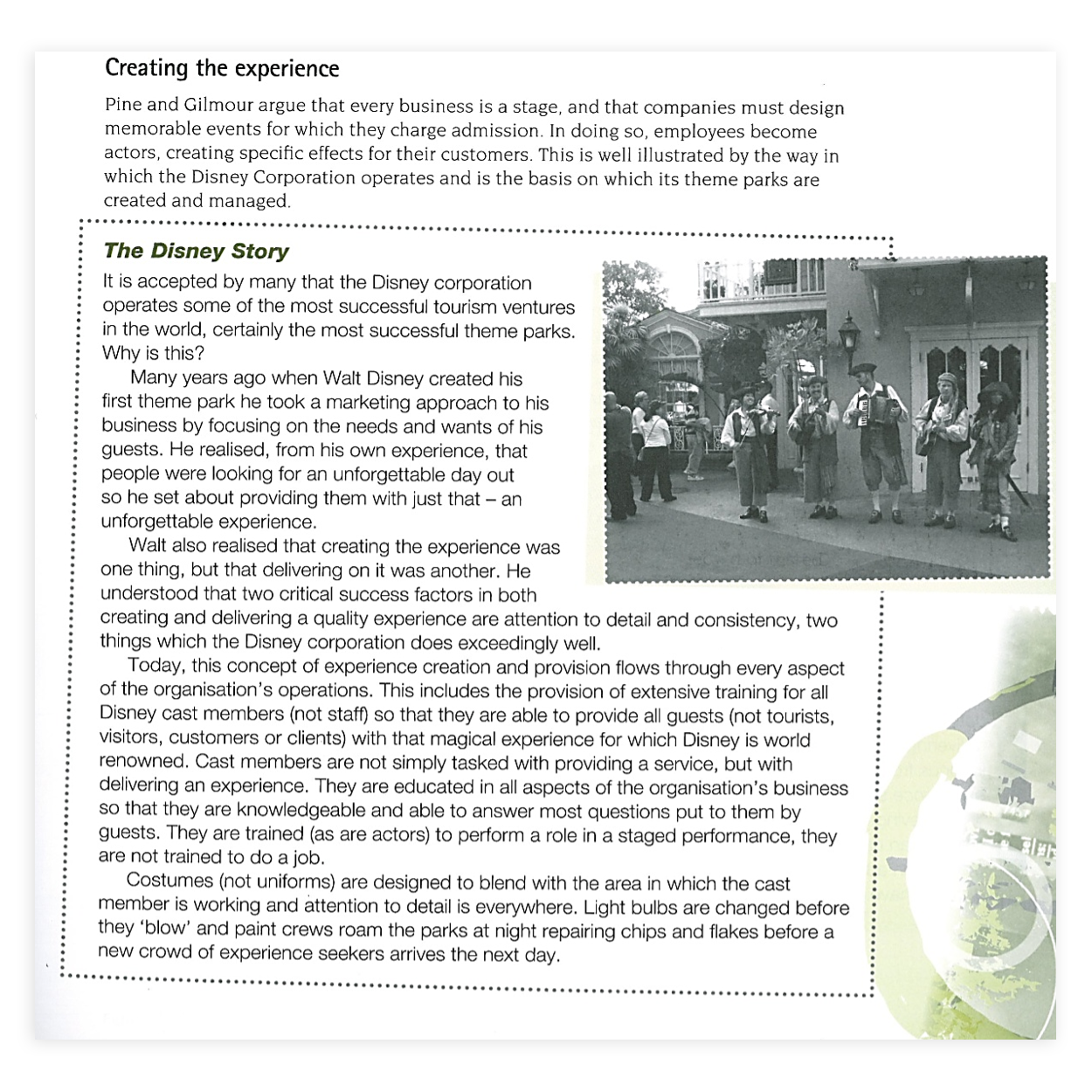
Merchandise
The merchandise that is for sale inside all the theme parks is part of the Disney experience. The goods are all displayed enticingly, in shops that reflect the different lands that they are in and all cast members working in the shops are in costume which reflects the style of the shop. For example:
- Fantasyland – 'The Mad Hatter'. Selling character hats, mouse ears, and free embroidery.
- Tomorrowland – 'The Star Trader'. Selling Star Wars collectibles, apparel, Disney character merchandise, hats, glassware, and watches.
- Adventureland – 'Adventureland Bazaar'. Selling Lion King and Aladdin souvenirs.
- Downtown Disney - the flagship store is The Disney Store. This store is so big you need to allow hours to look through it.
The Magic Of Frozen
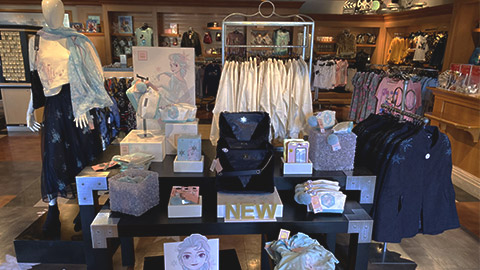
Reading
Read the article “How Disney Turned ‘Frozen’ Into a Cash Cow.”
Bear in mind that merchandise is an integral part of the 'Disney experience'. It acts as a reminder of a customer's visit to the Parks.
Whilst this article is dated 2014, it gives a great overview of the impact that the "Frozen" franchise has had. Disney has since capitalised on this, releasing a movie sequel, some 5,000 books translated into 41 languages, creating 4 short re-imagined stories in collaboration with Lego, generating over 1 billion YouTube views of the song ‘Let it Go’, and selling the soundtrack 4.1 million times. (Bezemer, 2021)
Amazing Facts About Frozen!
- 3 million Frozen dresses have been sold.
- Disney is now offering tours to Norwegian sites. (It was an animated feature)
- There is an Oral care line.
- 1 billion dollars (US) has been made in Frozen merchandise revenue.
- Disney makes more money selling branded movie merchandise than from actual movies.
The tourism product comprises everything a tourist purchases, sees, experiences, and feels, from the time they leave home until they return. The tourism product also involves experiences and expectations.
Learning Activity: Disney Merchandise
Given that retail sales are such a big part of Disney, find the strangest merchandise or products that Disney currently sells. Share your findings in the Forum: Disney Merchandise.
Learning Activity: Disney Character
What Disney character are you? Take this quiz, and post your findings in the Forum, Disney Character.
The Complete Experience
If we consider the one industry experience with Walt Disney World, how are they “managing” the experience that visitors will have?
They provide transportation, hotels, theme parks, shops, and dining. This means to some extent they can ensure that the experience will always be of a very high standard. They interlink and cross over themes to create a truly connected experience for the guest.
Watch this video
It is about the Animal Kingdom Lodge at Walt Disney World, which provides a unique experience for guests. (2:50)
Learning Activity: Secrets to Guest Success
Time for you to complete some research. Using the internet, source six(6) more secrets behind the successful Disney guest experience. You will need to find out exactly what Disney does to elevate the experience to the best it can be! Ensure you find out what a ‘magical moment’ is and give an example - this can be one of your six.
Share your findings with your classmates on the Forum: Disney Secrets.
Infographics
An infographic is a visually entertaining representation of any kind of information and ideas. They are intended to present information clearly and quickly.
Here is an example:

There are many free graphic design platforms (such as Canva, Piktochart, or Visme) that have templates that you could use to create an infographic, alternatively, you can create your own template. You should remember when displaying any facts, figures, or graphs that you must reference the source of your data. A selection of the best infographic makers available on the web will help you create your infographics.
- How to Make an Infographic in 30 Minutes.
- How to Make an Infographic in 5 Steps.
- Free Canva Infographic Template.
- Piktochart Infographic Maker.
Learn how to create an infographic and practice your skills in the following link.
Then complete the following learning activity where you get the chance to develop your own infographic.
Learning Activity: Develop an Infographic
Now you have listed and explained your top six secrets in the previous learning activity entitled, "Secrets to Guest Success" you are to develop an infographic exhibiting all six of your favourite business operations that contribute to the effectiveness of the business and its ability to provide a quality visitor experience. This is a very valuable learning activity to prepare you for your assessment. Have fun!
Under each graphic, you must briefly explain how it contributes to the customer experience. Share your infographic in the Forum, Develop an Infographic.
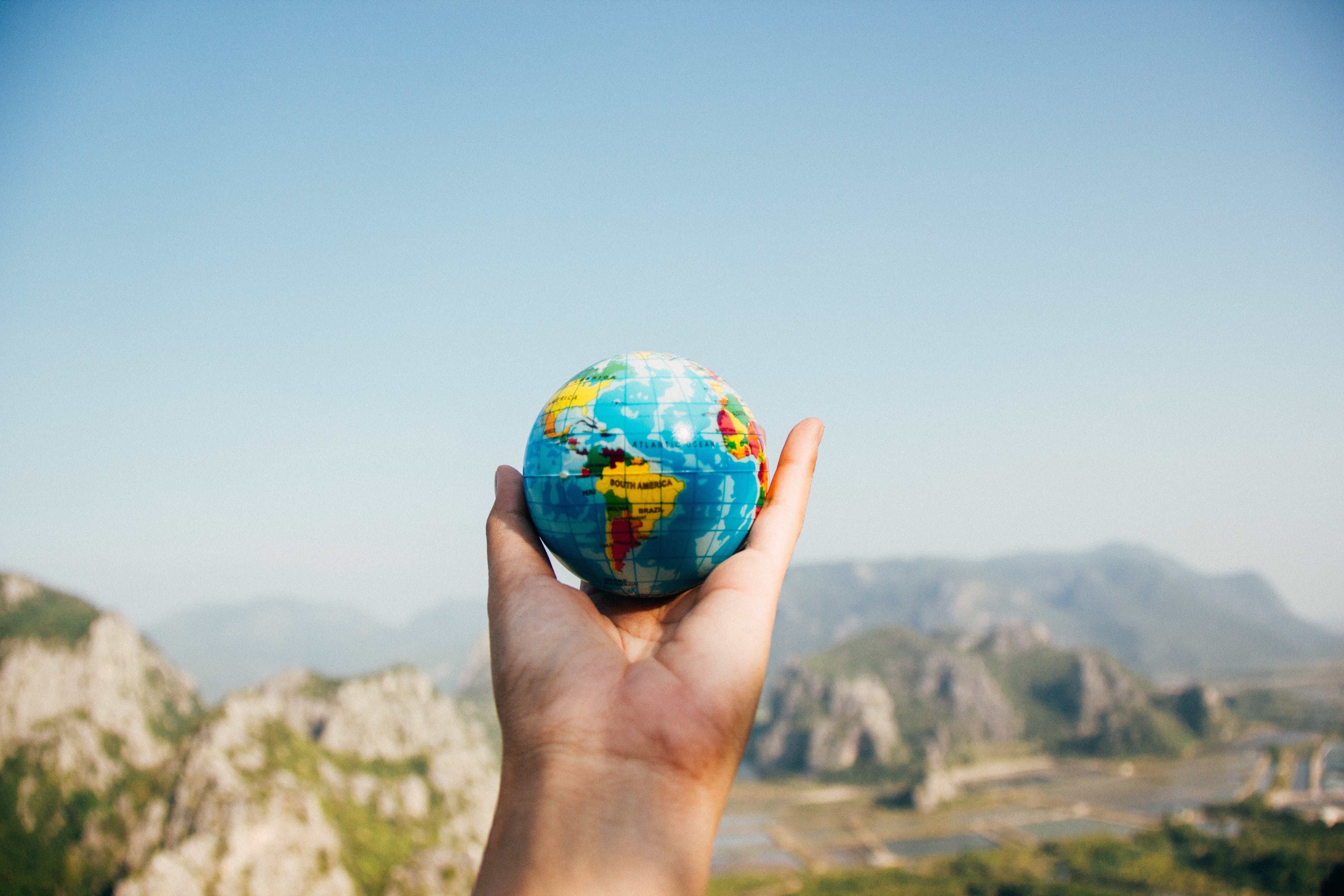
Some people will plan and decide when they want to go and travel, and for others it can be quite spontaneous, led on by an event, circumstances or simply a whim.
When people have discretionary income, the idea of travel itself can have some fierce competition.
Competition isn’t always in the form of a different company offering a similar product. You’ve just thought about the competition with the travel plan itself. Destinations can also compete with each other once the idea of travel has been agreed upon and people are thinking of going on holiday.
Some of the competition a travel plan might face is if someone has some discretionary income. They could:
- Buy a new car
- Give it to family, friends, and charity
- Fix up the house
- Build a garage
- Put up a fence
- Put in a pool
- Buy a big-screen TV.
Now here are some of the reasons that travel might “win the day” against the competition. This includes:
- A person who has never travelled before.
- A desire to see new places.
- A desire to experience a new culture.
- Seeing family and friends.
- A special event.
- A desire to see a specific place or city. For example, Paris, or the Grand Canyon.
- Getting away for the winter. To get some sun and relaxation or pampering.
- Trying new adventure activities to get an adrenalin fix.
Competition isn’t always in the form of a different company offering a similar product. You’ve just thought about the competition to the travel plan itself, but destinations can also compete with each other once the idea of travel has been agreed upon and people are thinking of going on holiday.
Think about what might influence a person’s decision to travel to a destination. These may include but are not limited to:
- The weather/season at the destination.
- Budget/costs – to get there and whilst there (specials advertised).
- The amount of time available to travel – with a consequent impact on the distance the traveller might be able to go.
- Safety at the destination.
- Language concerns/ culture/ the food etc.
- Trip Advisor reviews.
- Events/activities that might be of particular interest to the traveller.
- The reputation of the destination – reviews by friends, and family who have been there before.
- Movies and television.
- Politics.
- Travel Agent.
Let’s apply these considerations to the decisions people might make about visiting New Zealand or other world destinations.
What may influence someone to go and participate in this tourism activity or visit this place? A good question to consider is: Am I travelling specifically to do this activity/visit this attraction or am I going to that city/town and so while I am there, I might do this?
Examples of overseas destination competitor’s websites include:
- https://www.australia.com
- https://www.visitgreece.gr
- https://www.visitbritain.com/nz
- https://www.visittheusa.com

A competitive advantage is what marks a business as different from its competitors. It might be related to factors regarding products, reputation as a business, customer service, distribution network, and even location. It is something that makes customers see the company’s goods or services as more desirable than those of any other rival.
Examples of competitive advantage include:
- companies that have developed better technology and have pushed forward in the digital arena can have a competitive advantage - for example, airlines that offer self-check-in kiosks and good quality onboard personal entertainment systems.
- companies that have added a personal touch to their products or services can mark themselves as different and more desirable - for example, when Coca-Cola printed names on their cans, or when hotels welcome guests by displaying a personalised welcome message on the TV screen in guest rooms.
- companies with highly trained, skilled, and experienced employees that know their field and deliver excellent customer service
- companies with patents and intellectual property which is protected by law – an excellent example of this is the WDC which holds copious trademarks on their characters’ names and images.
Competitive advantage can also be applied to countries, organisations, and individuals.
Which companies, or countries, do you feel might have a competitive advantage and why?
Competitive advantages can be broken down into either comparative advantages or differential advantages.
Comparative Advantage
A business organisation might be able to produce its goods or services more cheaply than its competitors which allows it to create more sales or to make larger profit margins than its rivals. This type of competitive advantage is known as a comparative advantage. Typically, customers will choose to buy the cheaper of any two same products – for example, a car owner will usually purchase fuel from a gas station whose price is 10 cents cheaper than others in the area. In other words, customers can compare the same product and choose to buy the cheaper one.
Differential Advantage
But the competitive advantage isn’t just cost-led. There are a variety of factors that can contribute to a business advantage such as the quality of the product, the company’s brand image, their intellectual property, and their customer service. A differential advantage is one when a company’s products or services differ from their rivals and are seen as unique and or superior quality. They cannot be replicated. Factors that contribute to differential advantage include advanced technology, strong brand identity and patent-protected products or processes, and excellent customer service.
Economies Of Scale
When a company increases its production or sales, but at the same time is able to reduce costs, this is another competitive advantage known as economies of scale. For example, a business may be able to purchase its supplies in bulk, therefore have the ability to negotiate a lower price than its competitors. At the same time, it may be able to keep its administrative or manpower costs the same – thus leading to decreased costs, but increased volume.
Triple Bottom Line
The triple bottom line is a concept that businesses should measure not only their financial performance but also their social and environmental impact. It’s a commitment where firms strategically work towards measuring their impact on people, (customers, employees, and local community- all stakeholders) and the planet, (environmental sustainability) without losing focus on company profit. This can be deemed as linked to competitive advantage as customers nowadays are much savvier and more aware of business responsibilities. They actively seek to support those that can show their commitment to all ‘three Ps’, people, planet, and profit. You have already studied the WDC’s strategy in its Corporate Social Responsibility Report.
Know Your Competition
As we learned earlier, competitors aren’t necessarily just similar companies or products. Anything else that customers can do or spend their money on instead of your product or service, is a competitor. Knowing your competitors and their strengths and weaknesses allows a business to develop strategies that can take advantage of such weaknesses. To identify your competitive advantage, you need to know your competition and exactly what they are offering. A business must be tuned into who their customers are, know exactly what they want, and must go out of their way to delight their customers. Once the competitive advantage is established, communicating this message to all customers at every opportunity will help consolidate the idea that your product is the best.
Looking back at the entire WDC, you need to know who is your competition. Read more about this here.
Disney's Competitive Advantage
Learning Activity: Disney's Competitive Advantage
Disney’s brand is in itself a competitive advantage. This powerhouse of global branding provides the company with the leverage to develop new business streams such as their paid streaming services, Disney+ which delivers entertainment from Disney, Pixar, Marvel Star Wars and National Geographic. The quality associated with the Disney brand is such that when a viewer decides to watch a Disney product, they can be assured of the quality, whereas can the same be said of a ‘Netflix Original’?
Analyse Disney’s rivals and come up with some thoughts as to how Disney differs from its rivals. Reflect on what you have learned so far about Disney. What do you think is Disney’s competitive advantage?
Share your thoughts on the Forum, Disney's Competitive Advantage.
Learning Activity: Theme Park Choice
You work for a well-known travel agency. You have just received a call from a family who wants to visit an overseas theme/amusement park as part of their stay. They have requested a theme park that is similar to Walt Disney World. The family consists of two adults and two teenagers. Being a family of four, they’re a cost-conscious family, so value for money is an important consideration.
They are flexible on location and would like to travel in May and stay from 3-5 days. They love technology, and being outdoors, and enjoy meeting other tourists from around the world. Ideally, they would like accommodation on-site, or very near the park. Also, they particularly enjoy rides that are water-themed, and that are also quite scary. They like being in a very large theme park, that has a wide selection of restaurants/cafes, good transportation links, and that has plenty to see and do for the entire day.
Your role is to research FOUR of the following theme park attractions, and then, put forward ONE of them. The data you research should support your recommendation. (You need to suggest the best theme park/attraction that you feel meets the brief).
This exercise is based on your ability to compare and contrast different theme and amusement parks from around the world.
Theme & Amusement Parks
- Universal Studios Parks and Resorts, Osaka, Japan
- Alton Towers, UK, (The owner is the Merlin Entertainment Group)
- Parque Warner, Madrid, Spain (The owner is Parques Reunidos)
- Shenzhen Happy Valley, China Travel Guide, (The owner is OCT Park)
You should research and document the following for each theme park:
- Cost of a family ticket (2 adults and 2 teenagers under 18 years old)
- Most popular ride
- Positive testimonials from sites, such as Trip Advisor
- Best time of the year to visit
- Number of repeat visitors
- Any new rides and attractions
- Transportation links
- Total number of restaurants/cafes etc.,
- The size of the theme/amusement park
Please note: You may have to make some assumptions based on your research. These assumptions should be logical, coherent, and relevant.
Review your research above and make a recommendation. Share your final recommendation and reasons for this recommendation on the Forum, Theme Park Choice.
International Case Studies
Having established what competitive advantage looks like, apply what you have learned and now look at our other international company case studies. Remember to look at the mission and values of the company to get an idea of its vision and establish its competitors and any points of difference. Analyse their products and services and compare them with competitors.
Learning Activity: International Case Study
Complete the same exercise you did with Disney; except this time using one of the following. Why not team up with a classmate online and work on this learning activity together? It would be a great way to make a new friend and feel connected online.
| Marriot International | Emirates | The Louvre Museum |
| Carnival Cruise PLC | Expedia Group | Legoland |
- Analyse your chosen company, identify its competition, and come up with some thoughts as to how it differs from its rivals.
- Consider and discuss what you think is the company’s competitive advantage.
Share your findings on the Forum, International Case Study.
Part of growing a business is being able to make sure you are constantly looking at how you can add value to customers or refresh your product so that people will want to visit and hopefully return.
Disneyland Entrance Fees
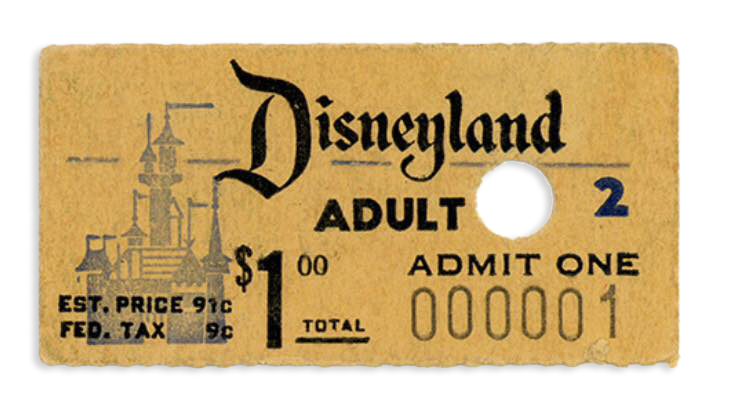
How has Disney grown their business? In 1955 when Disneyland opened, you paid an admission fee, and then on top of that, you had to buy tickets for the rides as well. The admission was $1.00, and rides were priced from 10 cents to 75 cents, or you could buy admission and an 8-ride ticket booklet for $2.50.
It was unheard of to pay an entrance fee for an amusement park, but Walt wanted to do that to make a statement that Disneyland was not an amusement park, but a totally new experience designed to entertain people of all ages.
After three months of operation, “A Day at Disneyland” was introduced where an admission price was charged which included 10 rides.
Each ride was categorised in A, B, C, D, or E
Rides that were in the “A” category were often cheaper rides or less popular, whereas “E” ticket rides were the faster, more expensive, and more popular rides.
Although you got varying amounts of each ticket in the different-sized coupon books, there were never enough of the "D" and "E" tickets. So, Disney set up several Central Ticket Booths throughout each land (two in Fantasyland) where you could buy the additional ride tickets you needed. Those tickets ranged in price from 10 cents to 90 cents each.
Over the years the rides would be re-categorised as new rides were introduced or as rides became less popular. As you know, the innovation never stopped at Disney.
In 1980, admission was around US$10 for admission and 10 rides.
By the late seventies, other theme parks which had started up were offering just the admission price and then unlimited rides. There was much opposition from Disney operations to offer a flat ticket price.
The concern was that everyone would want to go on the biggest, fanciest and newest rides.
However, with the opening of EPCOT, the coupons would not work as the different country pavilions could not be ranked – they all needed to be equal. So, on 1 October 1982, all three theme parks went for the Pay-One-Price.
Reading
Read the excerpt from In Service to the Mouse – Chapter 55 Goodbye, ticket books.
Case Study: True Story
In the early days of the park, there were a lot of people, particularly women, with small children from six to ten years of age who drove up in the morning during the summertime and bought general admission tickets for about $2.50 a day. We started seeing the same people doing this day after day. Buying tickets and dropping off their children. One day, Jack Linquist, who was the advertising manager for Disneyland decided to follow the children and see what they did. The children saw all the free shows and watched the band march down Main Street.
At lunchtime, they bought a hamburger or hotdog to eat. The rest of the day they enjoyed wandering around the park. At around five in the evening, they would leave the park and wait for their mothers to pick them up. On talking to the mothers Disney found for the most part they were single mothers. One was quoted as saying,” I cannot afford a good babysitter, I wouldn’t trust my kids with a babysitter I could afford, but for $5 a day, and $1.50 for food, I feel safe leaving my kids here.”
Park Hopping
Park-hopping became a part of the overall Disney experience that continues to this day. Guests have a choice of buying admission for a day into just one park or buying a hopper ticket that allows them to go into another park on the same day.
With Disneyland and Disney California Adventure – a hopper ticket is great because you can walk between the two and it is only a matter of minutes.
However, at Walt Disney World the parks are more spread out and you need to take transportation between them. This can add time to your day as you exit the park, walk to the transportation stop, wait, then travel to another park, and then walk from the bus stop or monorail station into the next park via turnstiles and security bag check.
The advantage might be that you want to go back into the parks at night when the fireworks displays are activated.
Learning Activity: What's New in Disney?<
Have a look at Disney’s website or search YouTube and think about what else Disney has done (or is currently doing) to grow their business beyond pricing structures. Write down some of the “new” products in your forum, using images that illustrate your choice of new products. Post to the Forum, What's New in Disney.
Impacts On Growing A Tourism Business
Think back to the beginning of this course when we studied the tourism operating environment. What situations or circumstances could help grow a business, or bring about a decline in numbers? Here are a few:
- Added value or a new product could help make it grow.
- Competition – new ones starting or closing up.
- Bad/excellent ratings on Trip Advisor.
- Bad or excellent ratings of your competition.
- Transportation changes – no aircraft serving the region.
- Accidents in the industry you are in.
- Earthquake.
- Crime rate.
- Movies made in NZ.
- Lack of accommodation in your area so limited growth is available.
- More annual leave has been given.
- Health improvements–people live longer.
- Terrorism.
- Airlines increase frequency to NZ e.g. China airlines now flying 7 days a week.
- A great marketing campaign in overseas countries.
- Celebrity e.g. from China coming here and tweeting about it.
- Travel recommendations from publications, sporting events etc.
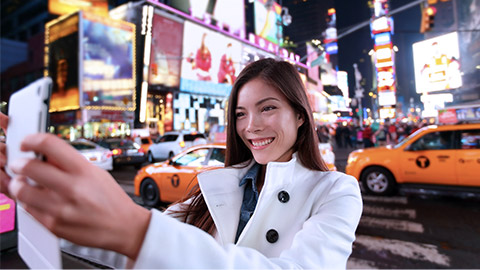
Trends are interlinked with the tourism industry and can present both opportunities and threats to travel and tourism companies. If you think back to the PESTEL concept of analysis and consider the factors, you will see that trends can be seen in the economic, environmental, technological, and socio-cultural segments. Tourism companies need to be fully aware of consumer behaviours to enable them to remain relevant and in step with their customers.
For example, newspaper owners were not in sync with both technology and consumer behaviour and were very slow to react in the early days of the internet. News started to become freely available online, but the newspapers thought that customers would still pay for their news to be delivered once a day. This, of course, was not the case, and the newspaper industry saw its market shrink dramatically to older people who weren’t yet ready to fully embrace these new technological advances.
You will see how this ties together knowing your competition and your customer needs, with being abreast of current trends and proactivity – even leading these cultural changes, can give a company a leading position in the marketplace.
Learning Activity: Industry Trends
Customers want healthy organic options/ health retreats & spas etc. with more demand for active holidays such as trekking and cycling
Brainstorm as many trends as possible that impact the industry. Share your ideas in the Forum, Industry Trends.
The Lion King - Te Reo

The Disney classic, The Lion King, was released in New Zealand cinemas after receiving a te reo Māori makeover. Jase Te Patu voices the character Banzai, the male hyena, and said he felt blessed to be part of the project. He said in his opinion, the mana of the story with its African roots had been maintained and whilst it was translated in te reo Māori, the “richness” of the story was intact.
He went on to say, “This movie is for our next generation, this is for our tamariki, mokopuna, for our young babies who can have a Disney movie, a mainstream movie in our language. So, our language not only lives, it thrives.” (Radio New Zealand, 2022)
Listen to this audio piece from TVNZ’s Breakfast programme which interviews Pere Wihongi in Los Angeles. Pere is a composer who helped cast the new sound recordings and discusses how he wanted to ensure the integrity of the production and final offering, ensuring the authentic Māori sounds were not altered. (Wihongi, 2022)
Watch this video
Watch how the film was voiced. (4:14)
Reflection
How do you feel about this?
Is this Disney development a reaction to a socio-cultural environmental change? Is this keeping up with trends or part of their CSR wishing to accept diversity and keep te reo Māori alive?

There are a variety of socio-cultural, economic, and environmental impacts, both good and bad.
This thought reinforces the fact that tourism is a people business, as well as one that delivers on the pleasure-seeking nature of the participants. However, the delivery of this can impact on others. For example, Amsterdam is a well-known tourist centre, but have you ever considered how it would be if you had to live there, seeing and living in what others come only to experience for a long weekend? The romantic city of Venice, Italy with its labyrinth of canals, has long been suffering under the sheer number of tourists that flock there.
Overtourism

Overtourism happens when there are simply too many visitors to a particular destination and local life is impacted, both environmentally and socially. Venice is one such place. Overtourism in Venice has seen rent prices for local tenants rise beyond manageability and they have been pushed out to make way for holiday rentals. The majority of locals can no longer afford to live there. The narrow roads and canals are jammed with tourist vehicles and wildlife is scared away by so much human activity. Pre-Covid times, Venice hosted annually approximately 30 million visitors, and in the peak seasons, the cobblestone streets were jampacked with tourists with everyone fighting for the perfect selfie. Of course, these tourists are good news for the local economies that rely on tourism, but not so great for other businesses. The local shops selling everyday goods and services, (furniture shops, hairdressers, grocers, etc.) are impacted by the local population moving away from the city, which means their trade is severely in decline. Many sell out to yet more tourist souvenir shops, cafes, bars, and restaurants, and local amenities are put under great strain.
Venice is an island. Massive cruise ships visit Venice, which causes much air pollution and at the same time damages the fragile marine ecosystem found in the lagoon. The amount of waste these ships, and the other visiting tourists, create is a long-term environmental problem. All of this waste has to be removed and disposed of.
The Social Impact of Tourism
There are many positive and negative social impacts on tourism. However, from the preservation of local culture and art, there are many aspects of tourism. Watch the following video that explores the social impact of tourism, and how you can play a part in achieving a sustainable tourism industry.
Watch this video
It highlights the social impact of tourism. (14:16)
Here are some examples of both the positive and negative impacts that tourism can have on a community or a place. Can you think of some more to add?
POSITIVE
- Provides employment.
- More services in the host community – restaurants, cafes, well-maintained public areas e.g. parks, gardens, museums, art galleries
- Investment in basic infrastructure – roads, sewage systems, water supplies, airports etc.
- Provides local government with money to invest in schools, healthcare social services etc.
- The multiplier effect (spreads wealth into the local community).
- More entertainment.
- Learning tolerance of others through interaction with other cultures and reducing stereotypes.
- Pride in the host communities’ culture can be generated.
- Revival of old traditions, ceremonies, customs, buildings and historic sites can be achieved.
NEGATIVE
- Costs of living may be higher in areas with large numbers of tourists.
- Housing prices may increase in key tourism areas.
- Social dysfunction – crime, antisocial behaviour (drunkenness), inflated pricing, and scams.
- Tourists consume too many resources (water, food).
- Overloaded infrastructure e.g. needs an upgraded water supply system – These major projects had to be funded by a relatively small number of local ratepayers without any direct contribution by the many tourists who use them.
- Multinational companies often control these tourism companies so much of the profit leaves the country.
- Conflict over different values, beliefs and practices.
- Loss of culture – traditional practices and crafts may be modified to meet the demands of tourists.
- Bad tourist behaviour and a lack of respect for local culture and practices can create a bad reputation for future generations of visitors.
- Degradation of the environment through overuse and depletion of natural resources.
- Fragile eco-systems may be destroyed.
- The land is lost from farming to tourist development.
